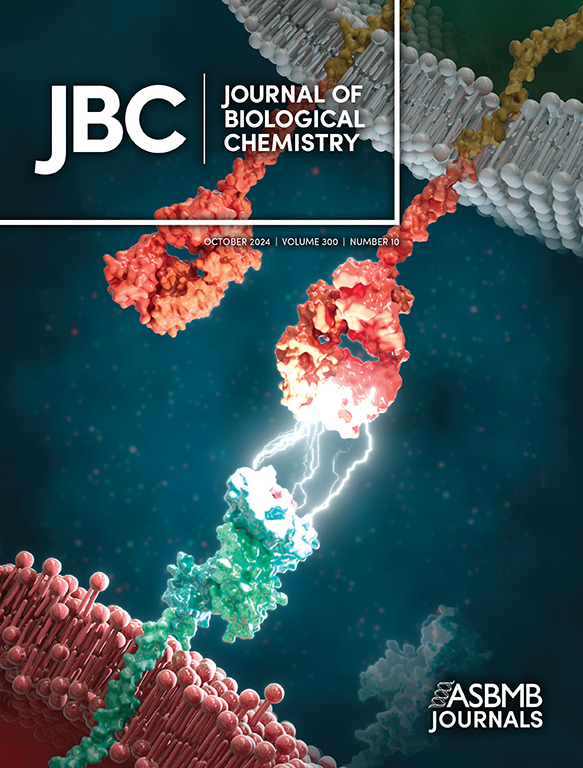Molecular Choreography of E1 Enzymes in Ubiquitin-like Protein Cascades: New Insights into Dynamics and Specificity.
IF 4
2区 生物学
Q2 BIOCHEMISTRY & MOLECULAR BIOLOGY
引用次数: 0
Abstract
In 2004, Aaron Ciechanover, Avram Hershko, and Irwin Rose were awarded the Nobel Prize in Chemistry for their groundbreaking work uncovering the stepwise, ATP-dependent degradation of cellular proteins. These studies laid the foundation for understanding ubiquitin (Ub) and ubiquitin-like (Ubl) proteins, an evolutionary conserved family of modifiers that mediate diverse cellular processes. The Ub/Ubl system operates through a reaction cascade involving E1 activating, E2 conjugating, and E3 ligating enzymes. As the initiating enzymes, E1s catalyze Ubl adenylation, thiolation, and thioester transfer to their cognate E2s. Despite their conserved architecture, E1s exhibit strict specificity for different Ubls and E2s, a critical feature for maintaining cellular homeostasis. While the molecular mechanisms underlying E1 interactions and activities remain incompletely understood, structural studies have provided key insights into the dynamic changes that accompany Ubl activation and transfer. This review highlights recent structures that build upon foundational biochemical research, elucidating the determinants of activity, specificity, and novel regulatory mechanisms governing E1 enzymes. We examine how conformational changes drive the transition from an adenylate-competent to a thioester-competent state and how these rearrangements facilitate interactions with Ubls and E2s while advancing the reaction cycle. Additionally, we explore recent insights into a prokaryotic E1-E2-like fusion that is structurally homologous to the noncanonical eukaryotic E1 ATG7, revealing its role in activating and conjugating a non-Ubl substrate and its implications for the evolutionarily trajectory of Ubl cascades. Finally, we discuss the current landscape of E1 inhibitors under investigation as potential anti-cancer therapies, as well as prospects for future investigations.泛素样蛋白级联中E1酶的分子编舞:动力学和特异性的新见解。
2004年,亚伦·切哈诺沃、阿夫拉姆·赫什科和欧文·罗斯因其突破性的工作发现了细胞蛋白质依赖atp的逐步降解而获得诺贝尔化学奖。这些研究为理解泛素(Ub)和泛素样(Ubl)蛋白(一个进化保守的修饰家族,介导多种细胞过程)奠定了基础。Ub/Ubl系统通过E1激活酶、E2结合酶和E3连接酶的级联反应起作用。作为起始酶,E1s催化Ubl腺苷化、硫代化和硫酯转移到它们的同源E2s。尽管它们的结构保守,E1s对不同的Ubls和E2s表现出严格的特异性,这是维持细胞稳态的关键特征。虽然E1相互作用和活性的分子机制仍不完全清楚,但结构研究为了解伴随Ubl激活和转移的动态变化提供了关键见解。这篇综述强调了最近建立在基础生化研究基础上的结构,阐明了E1酶活性的决定因素、特异性和新的调控机制。我们研究了构象变化如何驱动从腺苷酸态到硫酯态的转变,以及这些重排如何促进与Ubls和E2s的相互作用,同时推进反应周期。此外,我们探索了最近对原核生物E1- e2样融合的见解,该融合在结构上与非典型真核生物E1 ATG7同源,揭示了其在激活和偶联非Ubl底物中的作用及其对Ubl级联进化轨迹的影响。最后,我们讨论了目前正在研究的E1抑制剂作为潜在的抗癌疗法的前景,以及未来研究的前景。
本文章由计算机程序翻译,如有差异,请以英文原文为准。
求助全文
约1分钟内获得全文
求助全文
来源期刊

Journal of Biological Chemistry
Biochemistry, Genetics and Molecular Biology-Biochemistry
自引率
4.20%
发文量
1233
期刊介绍:
The Journal of Biological Chemistry welcomes high-quality science that seeks to elucidate the molecular and cellular basis of biological processes. Papers published in JBC can therefore fall under the umbrellas of not only biological chemistry, chemical biology, or biochemistry, but also allied disciplines such as biophysics, systems biology, RNA biology, immunology, microbiology, neurobiology, epigenetics, computational biology, ’omics, and many more. The outcome of our focus on papers that contribute novel and important mechanistic insights, rather than on a particular topic area, is that JBC is truly a melting pot for scientists across disciplines. In addition, JBC welcomes papers that describe methods that will help scientists push their biochemical inquiries forward and resources that will be of use to the research community.
 求助内容:
求助内容: 应助结果提醒方式:
应助结果提醒方式:


